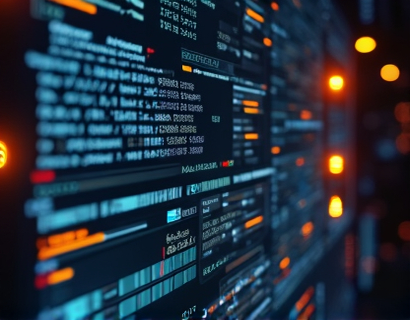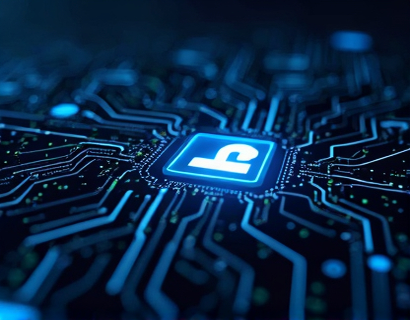Unlocking Digital Transformation: Leveraging AI and Crypto for Enhanced Ucosystem Experiences
The digital landscape is undergoing a profound transformation, driven by the convergence of artificial intelligence (AI) and cryptocurrency. This synergy is not just a technological curiosity but a powerful force reshaping how we interact with digital ecosystems. For tech enthusiasts and early adopters, understanding and leveraging this convergence is crucial to staying ahead in an increasingly complex and competitive environment.
Understanding the Synergy of AI and Crypto
At the heart of this transformation lies the synergy between AI and cryptocurrency. AI, with its ability to process vast amounts of data, learn from patterns, and make predictions, is revolutionizing how digital services operate. Cryptocurrency, on the other hand, offers a decentralized, secure, and transparent means of transaction and value exchange. When combined, these technologies create a powerful toolkit for building more engaging, efficient, and expansive digital ecosystems.
Enhanced Security and Trust
One of the most significant benefits of integrating AI and cryptocurrency is the enhancement of security and trust within digital ecosystems. Blockchain technology, the backbone of cryptocurrency, provides a tamper-proof ledger that ensures data integrity and transparency. AI can further bolster this by detecting and mitigating potential security threats in real-time. For instance, machine learning algorithms can analyze transaction patterns to identify anomalies and prevent fraud, thereby building a higher level of trust among users.
Improved User Experiences
The combination of AI and cryptocurrency can significantly enhance user experiences. AI-driven personalization ensures that digital services adapt to individual user preferences and behaviors, providing a more tailored and intuitive experience. For example, AI can analyze user data to recommend content, products, or services that align with their interests, making the digital ecosystem more user-friendly and engaging. Cryptocurrency adds a layer of convenience by enabling seamless and secure transactions without the need for intermediaries, reducing friction and enhancing the overall user journey.
Decentralized Applications (DApps)
Decentralized applications, or DApps, are a prime example of how AI and cryptocurrency can transform digital ecosystems. DApps run on blockchain networks, leveraging AI to provide smart, adaptive, and autonomous functionalities. These applications can operate without central control, reducing the risk of single points of failure and increasing resilience. AI can optimize DApp performance by dynamically adjusting parameters based on real-time data, ensuring optimal user experiences and efficient resource utilization.
Use Cases of DApps
- Financial Services: Decentralized finance (DeFi) platforms use AI to offer smart contracts, automated trading, and lending services, providing users with greater control and transparency.
- Supply Chain Management: AI-powered DApps can track and verify the authenticity and origin of products, ensuring transparency and reducing fraud.
- Healthcare: Blockchain-based health records combined with AI analytics can improve patient care by providing secure, accessible, and comprehensive health data to healthcare providers.
Economic Incentives and Tokenization
The integration of AI and cryptocurrency introduces new economic incentives through tokenization. Tokens can represent various assets, from digital content to real-world goods and services, and can be traded on decentralized exchanges. AI can optimize token distribution and pricing strategies, ensuring fair and efficient market dynamics. This tokenization model not only rewards users for their contributions but also fosters a more inclusive and participatory ecosystem.
Data Ownership and Privacy
Data ownership and privacy are critical concerns in the digital age, and the combination of AI and cryptocurrency offers innovative solutions. Blockchain ensures that users have control over their data, allowing them to decide who can access and use it. AI can enhance privacy by implementing advanced encryption and anonymization techniques, ensuring that sensitive information remains protected. This empowers users and builds a more trustworthy digital environment.
Challenges and Considerations
While the potential of AI and cryptocurrency is vast, there are challenges and considerations that must be addressed. Scalability remains a significant issue for blockchain technology, as transaction speeds and costs need to improve to support widespread adoption. Additionally, regulatory frameworks are still evolving, and compliance is essential to navigate the legal landscape. Developers and organizations must also prioritize ethical AI practices to avoid biases and ensure fairness in AI-driven decisions.
Strategies for Adoption
For tech enthusiasts and early adopters looking to leverage AI and cryptocurrency in digital ecosystems, several strategies can be employed:
- Stay Informed: Keep up with the latest developments in AI and blockchain through reputable sources and communities.
- Experiment and Prototyping: Engage in hands-on projects to understand the practical applications and limitations of these technologies.
- Collaboration: Partner with like-minded individuals and organizations to pool resources and expertise, accelerating innovation.
- Focus on Use Cases: Identify specific areas where AI and cryptocurrency can add the most value, such as enhancing security, personalization, or economic incentives.
Conclusion
The convergence of AI and cryptocurrency is not just a technological trend but a transformative force that is redefining digital ecosystems. By embracing this synergy, we can create more secure, efficient, and engaging digital experiences. For those ready to embark on this journey, the future of technology holds immense potential. Stay curious, stay innovative, and be part of the digital revolution.










































